Read This: Desert Gardens of Steve Martino
Weeds and walls. That’s how Phoenix landscape architect and native son Steve Martino describes his life’s work of designing gardens in the Arizona desert. Steve has a knack for simplifying the language of design and explaining how his own designs work. “Weeds” is his shorthand for native plants of the Sonoran Desert, plants that few believed to be garden-worthy until he started making gardens in the 1970s. “Walls” is self-explanatory once you’ve seen a couple of Steve’s designs. His signature move is to build color-saturated stucco walls that define outdoor space, provide privacy, lead the eye to borrowed landscape features like distant mountains, frame views through window cutouts, make a colorful backdrop for architectural plants like cacti and agaves, and provide a canvas for the play of shadows cast by the intense desert sun.
Courtesy of The Monacelli Press
Rejecting both the pseudo-Mediterranean landscaping that was popular at the time (palms and lawn) and “gardens of despair” gravel-scapes, Steve pioneered a new style that celebrated the beauty of the desert. For 40 years he’s been transforming the way Arizonans relate to the desert, and showing, one garden at a time, how to live in harmony with its fragile beauty. This year a monograph of his work was published by The Monacelli Press, Desert Gardens of Steve Martino, and it’s a beautifully photographed collection of 21 private gardens in and around Phoenix, plus two in Palm Springs, California.
Courtesy of The Monacelli Press
Authored by Caren Yglesias and photographed by Steve Gunther, the book is lushly illustrated, with up to 12 pages of photos covering each garden. Bird’s-eye drawings of each house and garden let you see the overall site plan, and occasional sketches of architectural details give a sense of the design process. A page of text about each garden provides an overview as well as detailed design problems and Steve’s solutions. Wherever you garden, you can learn a lot about design by reading this book. Steve is a master of creative and elegant design solutions regarding privacy (he cleverly circumvents city rules on fence/wall heights by building tall masonry sheds, which aren’t subject to fence-height regulations), capturing views, and making comfortable spaces that bridge the gap between home and the wild landscape.
Courtesy of The Monacelli Press
Steve’s love for the desert shines through each of his designs. He amplifies its unique features: sunlight (capturing shadows and using saturated color that shows beautifully in intense sunlight), space (defining space with walls and connecting gardens to the natural landscape), and architecture (showcasing the strong, quirky shapes of native plants and creating his own architecture with space-defining walls). Native plants thrive without need for what Steve calls the life support of endless watering.
Courtesy of The Monacelli Press
I highly recommend this book for anyone who loves design, landscape architecture, or the desert, although you do not have to be a desert dweller to appreciate Steve’s work. (I’m not, despite the popular misconception that Austin belongs to the Southwestern desert.) And if you aren’t already in love with a colored wall and a bristly-headed yucca, you will be.
If you’d like to know more about Steve’s work, check out two blog posts I’ve written about his gardens:
Color-drenched walls and desert beauty in Steve Martino-designed Palo Christi Garden
Desert retreat in Steve Martino-designed Quartz Mountain Garden
Disclosure: The Monacelli Press sent me a copy of Desert Gardens of Steve Martino for review. I reviewed it at my own discretion and without any compensation. This post, as with everything at Digging, is my own personal opinion.
I welcome your comments; please scroll to the end of this post to leave one. If you’re reading this in a subscription email, click here to visit Digging and find the comment box at the end of each post.
_______________________
Digging Deeper: News and Upcoming Events
Join the mailing list for Garden Spark Talks! Inspired by the idea of house concerts, I’m hosting a series of garden talks by inspiring designers and authors out of my home. Talks are limited-attendance events and generally sell out within just a few days, so join the Garden Spark email list for early notifications. Simply click this link and ask to be added.
All material © 2006-2018 by Pam Penick for Digging. Unauthorized reproduction prohibited.


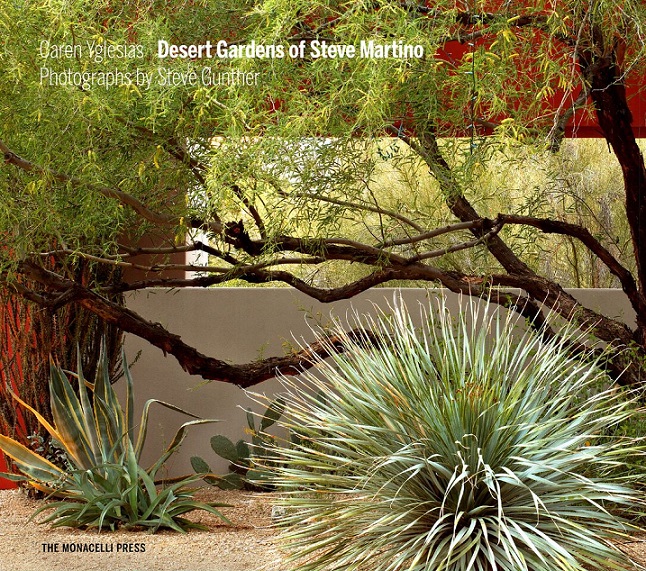
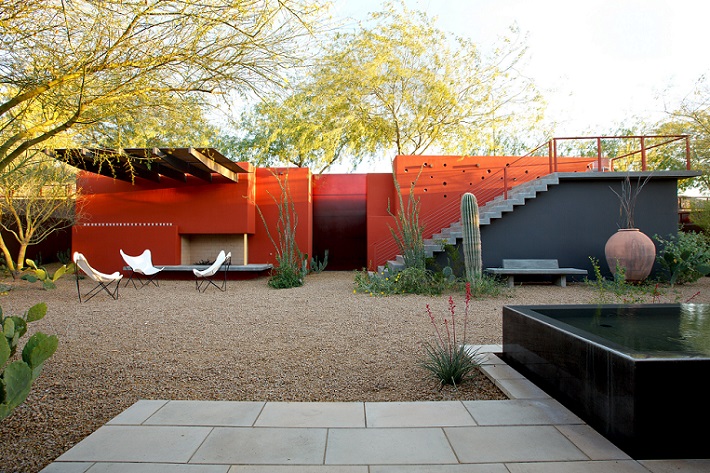
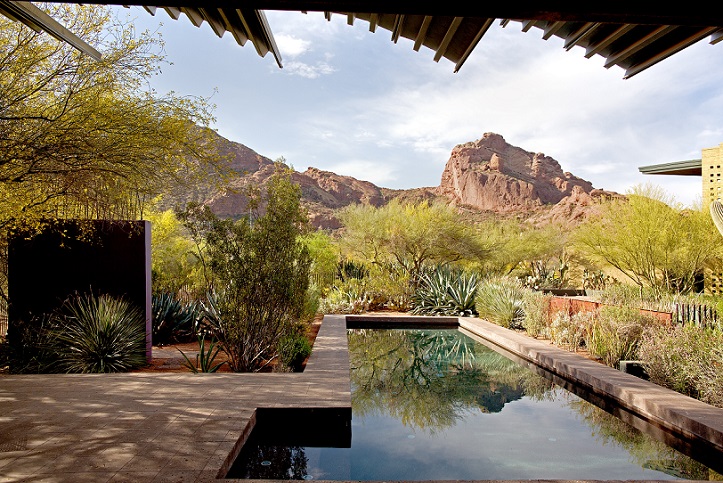
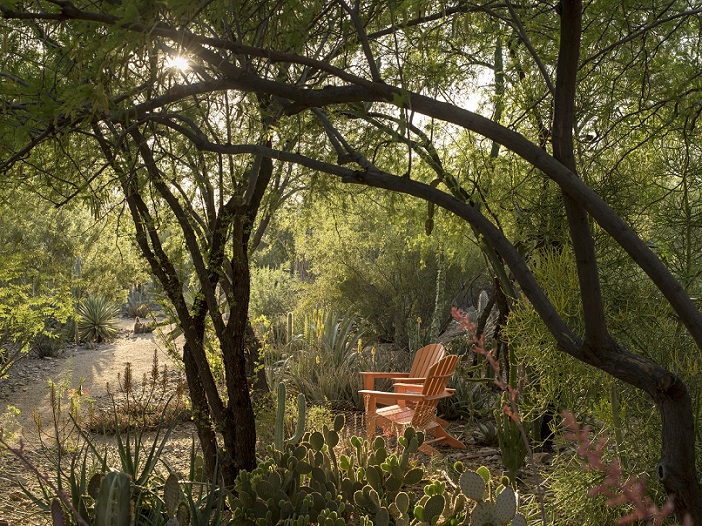
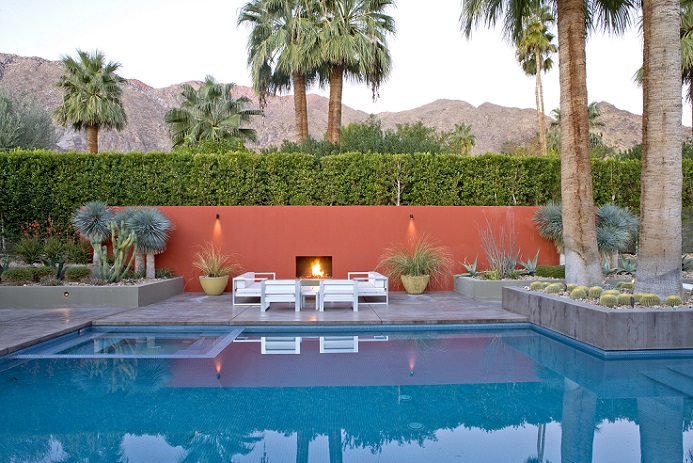
Dear Pam,
Many thanks for this wonderful review. You are so perceptive! I think you perfectly understand what we tried to do in this book with this amazing landscape architect and his critical work. I really appreciate your thoughtfulness here and your contribution in general to all who care about the garden as well as the larger landscape.
Sincerely, Caren
Caren, I’m happy to have been able to share your book with my readers. It’s a terrific showcase of Steve’s work.
Wonderful review of a great artist, Pam! I think I need this book too…
I think you’ll enjoy it, Denise.
His work is incredible. I tend to think of his landscapes as mostly suitable to the clean lines of modern architecture but the 4th photo shows that’s not necessarily so.
The text said that the owners of the naturalistic garden (4th photo) are avid gardeners and that Steve learned a lot about plants from them. So it sounds like that planting scheme was very much owner-driven or at least a strong collaboration. I included it because it is different from the other gardens pictured. When I visited two of his gardens a few years ago, I saw natural-looking spaces like this on the perimeters of his more structured spaces, and I really liked them too.
Steve’s work is delicious and it looks as though this book showcases it well. Looking forward to reading it myself. (By reading, I mean looking at the pictures and drooling.)
You will indeed drool.
I bought the book this summer and have been studying and enjoying it ever since. So clever to make use of the building code that allows sheds to be taller than walls–to use sheds as walls.
The garden I like best in the book is the plant lover’s garden of course, but the others are wonderful, especially the ones that integrate the home into the landscape and plan the design around the surrounding natural desert.
His shed workaround is genius. Thanks for sharing your impressions of the book too, HB.
Looks like eye candy to me!
For sure, Robin.
Tuning in late here! I happened on your blog post. It’s a useful and inspiring book, very much like the number of Martino’s lectures I’ve attended including the last one at UNM in ABQ. I only recall a few sections where a certain area of a landscape was described in narrative, but there were no photos…though I just use my imagination to fill in what I think it would look like.
This book gets rotated to different tables in my house, for guests / my own enjoyment.
It’s a perfect book for visually wowing your visitors.